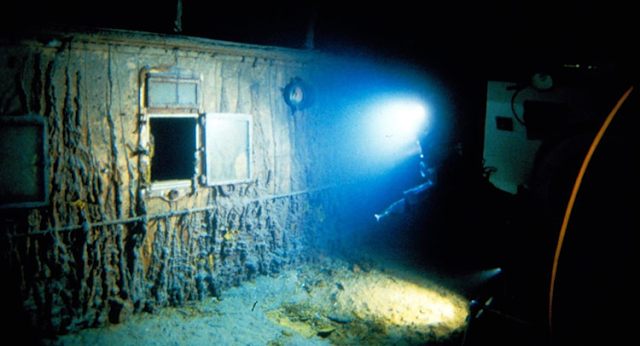Footage of ‘Titanic’ Wreckage Reveals a Look at When the Iconic Ship Was First Found The RMS Titanic, the ill-fated ocean liner that met its tragic end on April 15, 1912, has captivated the world's imagination for over a century. Its sinking in the North Atlantic Ocean remains one of the most infamous maritime disasters in history. However, the allure of the Titanic did not wane even after its watery grave was discovered in 1985. Recently, unseen footage of the Titanic wreckage has come to light, offering a unique glimpse into the momentous occasion when the iconic ship was first found. This essay delves into the significance of this newly surfaced footage and explores the impact it has on our understanding of the Titanic's legacy.
The RMS Titanic, the ill-fated ocean liner that met its tragic end on April 15, 1912, has captivated the world's imagination for over a century. Its sinking in the North Atlantic Ocean remains one of the most infamous maritime disasters in history. However, the allure of the Titanic did not wane even after its watery grave was discovered in 1985. Recently, unseen footage of the Titanic wreckage has come to light, offering a unique glimpse into the momentous occasion when the iconic ship was first found. This essay delves into the significance of this newly surfaced footage and explores the impact it has on our understanding of the Titanic's legacy.
Unveiling the Unseen Footage
The release of previously unseen footage of the Titanic wreck is a significant development that reignites public fascination with the tragedy. The footage, recorded during the original 1985 expedition led by Dr. Robert Ballard, provides a fresh perspective on the initial exploration of the Titanic's resting place nearly four kilometers below the ocean's surface. The high-resolution images showcase the eerie beauty of the wreckage and shed light on the conditions in which the ship currently lies.
A Glimpse into History
The discovery of the Titanic wreck was a watershed moment in maritime archaeology and historical preservation. Until 1985, the Titanic's exact location remained a mystery, shrouded in the depths of the Atlantic Ocean. The unseen footage takes us back to the time when the iconic ship was first found, capturing the excitement and awe that must have accompanied the historic moment. It allows us to witness the precise moments when the deep-sea cameras unveiled the haunting silhouette of the ship's bow, the scattered debris, and the remnants of a vessel that once represented the pinnacle of human engineering.
Preserving the Titanic's Legacy
Beyond the mesmerizing visuals, the newly discovered footage serves a crucial purpose in preserving the Titanic's legacy for future generations. The delicate state of the wreck and the ongoing deterioration of its structure demand careful documentation and conservation efforts. The footage serves as a valuable resource for researchers, scientists, and historians, aiding in their understanding of the ship's current condition and the forces of nature that have shaped it over time. By capturing the wreckage on film, this unseen footage helps in mapping the changes that have occurred since the initial discovery and provides a baseline for further research.
Implications for Historical Narratives
The release of this unseen footage also raises questions about the broader impact on historical narratives surrounding the Titanic. Over the years, countless books, films, and documentaries have attempted to recreate the tragic events and paint a vivid picture of the ship's final moments. However, the discovery of new visual evidence challenges some long-held assumptions and provides fresh perspectives on the events leading up to the Titanic's demise. This footage allows historians to reassess their interpretations and develop a more accurate understanding of the disaster, enriching the collective knowledge about this momentous event in human history.
Conclusion
The unveiling of unseen footage of the Titanic wreckage is a remarkable event that reignites our fascination with the tragic tale of the iconic ship. This footage offers a unique glimpse into the historic moment when the Titanic was first discovered, providing a tangible link to the past. Its release not only preserves the legacy of the Titanic but also contributes to ongoing research and reevaluation of the historical narrative. As we continue to uncover new insights into this maritime tragedy, the unseen footage serves as a poignant reminder of the lives lost and the enduring fascination surrounding the RMS Titanic.

The RMS Titanic on April 10, 1912. (Photo: Wikimedia Commons, PUblic domain)
The 80-minute-long video has been released by the Woods Hole Oceanographic Institution (WHOI).

The first-class lounge. (Photo: Wikimedia Commons, Public domain)
h/t: [Design Taxi]

No comments:
Post a Comment
Note: only a member of this blog may post a comment.